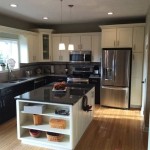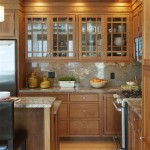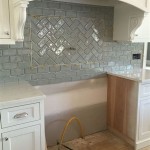What Are The Best Kitchen Sinks?
Choosing the right kitchen sink can significantly impact both the functionality and aesthetics of a kitchen. With a variety of materials, styles, and configurations available, selecting the best sink requires careful consideration of individual needs and preferences. This article explores the key factors to consider when choosing a kitchen sink, highlighting the pros and cons of popular materials and styles.
Material Matters: Durability and Aesthetics
The sink material plays a crucial role in its durability, maintenance requirements, and overall appearance. Stainless steel remains a popular choice due to its affordability, resistance to stains and rust, and classic look. Higher gauge stainless steel (lower numbers) indicates thicker, more durable material.
Composite sinks, made from a combination of granite or quartz dust and resin, offer exceptional durability and resistance to chips, scratches, and heat. They come in a variety of colors to complement different countertop materials and design styles. However, composite sinks can be more expensive than stainless steel.
Fireclay sinks, crafted from molded clay fired at extremely high temperatures, are known for their durability and resistance to chipping, scratching, and staining. They offer a classic, farmhouse-style aesthetic, but their weight requires sturdy cabinet support. Porcelain sinks, coated with a layer of porcelain enamel over cast iron or steel, provide a smooth, glossy surface that's resistant to stains and scratches. However, they can be prone to chipping if heavy objects are dropped on them.
Size and Configuration: Meeting Functional Needs
The size and configuration of the sink should align with the kitchen's workflow and the homeowner's cooking habits. Single-basin sinks provide ample space for washing large pots and pans, while double-basin sinks allow for multitasking, such as washing dishes in one basin and rinsing vegetables in the other. Triple-basin sinks offer even greater flexibility, with a smaller middle basin often dedicated to food disposal or handwashing.
Consider the depth of the basins as well. Deeper basins can accommodate more dishes and minimize splashing, but they may require bending further to reach the bottom. The sink's dimensions should also be compatible with the available countertop space and cabinet size.
Furthermore, consider the placement of the drain. Off-center drains can maximize usable space in the basin and under the sink cabinet. The number and placement of faucet holes should also correspond with the chosen faucet style and additional features like sprayers or soap dispensers.
Installation Type: Top-Mount, Undermount, and Apron-Front
The installation type affects both the appearance and functionality of the sink. Top-mount sinks, also known as drop-in sinks, are the easiest to install and are compatible with most countertop materials. The sink's rim rests on top of the countertop, creating a visible lip.
Undermount sinks are installed beneath the countertop, creating a seamless transition between the countertop and sink. This design allows for easy cleaning and a more modern look, but it typically requires professional installation and is compatible with solid surface countertops like granite or quartz, not laminate.
Apron-front sinks, also known as farmhouse sinks, have an exposed front panel that extends beyond the edge of the countertop. These sinks offer a traditional, farmhouse aesthetic and often feature deep basins. They can be installed as undermount or top-mount sinks, depending on the specific model.
Special Features: Enhancing Functionality and Convenience
Modern kitchen sinks offer a variety of special features that can enhance their functionality and convenience. Integrated drainboards provide a dedicated space for drying dishes or prepping food. Built-in cutting boards and colanders can further streamline kitchen tasks. Sound-dampening pads minimize noise from running water and garbage disposals.
Some sinks incorporate specialized features like water filtration systems or instant hot water dispensers. These features can add significant convenience to everyday kitchen tasks. Touchless faucets and soap dispensers offer hands-free operation, promoting hygiene and ease of use.
Budget Considerations: Balancing Cost and Quality
Kitchen sink prices vary widely depending on the material, size, configuration, and features. While stainless steel sinks are generally the most affordable option, higher gauge stainless steel and premium features will increase the cost. Composite sinks tend to be more expensive than stainless steel, while fireclay and porcelain sinks are often at the higher end of the price range.
It’s important to establish a budget before beginning the selection process. Consider the long-term value and durability of the sink when evaluating different options. A higher upfront investment in a durable, high-quality sink can save money on repairs and replacements in the long run.

42 Best Kitchen Sinks 2024 Hgtv
The 5 Best Kitchen Sinks

How To Choose The Best Material For Your Kitchen Sink Tap Warehouse

Which Are The Best Kitchen Sinks Scavolini Magazine

Top 5 Kitchen Sink Materials Sinkology

Top 5 Best Kitchen Sink 2024 Workstation Sinks Buying Guide Youtube

Luxury Kitchen Sink Guide Meldnyc
The 5 Best Kitchen Sinks

The Best Kitchen Sink Designs And Ideas For You Dlife Interiors

Top 10 Kitchen Sinks For Singaporean Homes In 2024 Bathroom Guru








